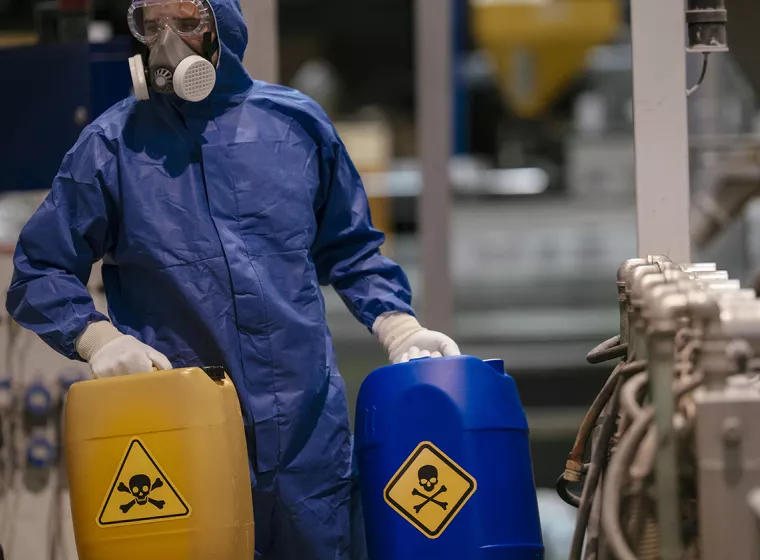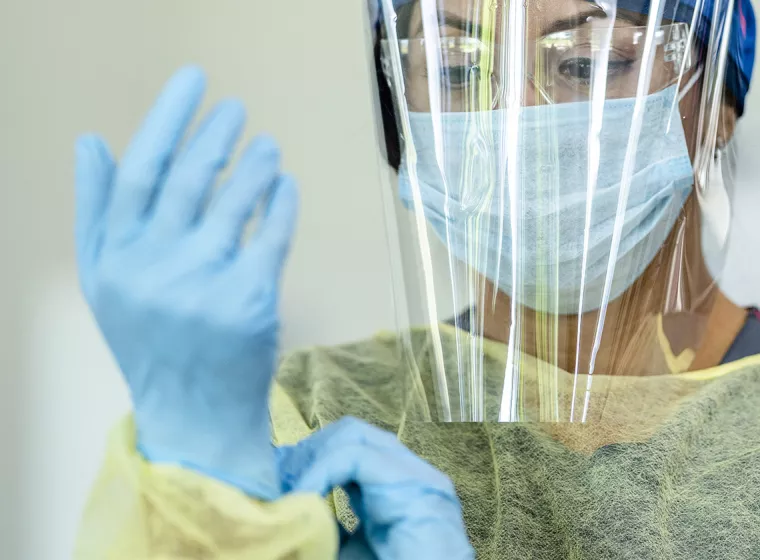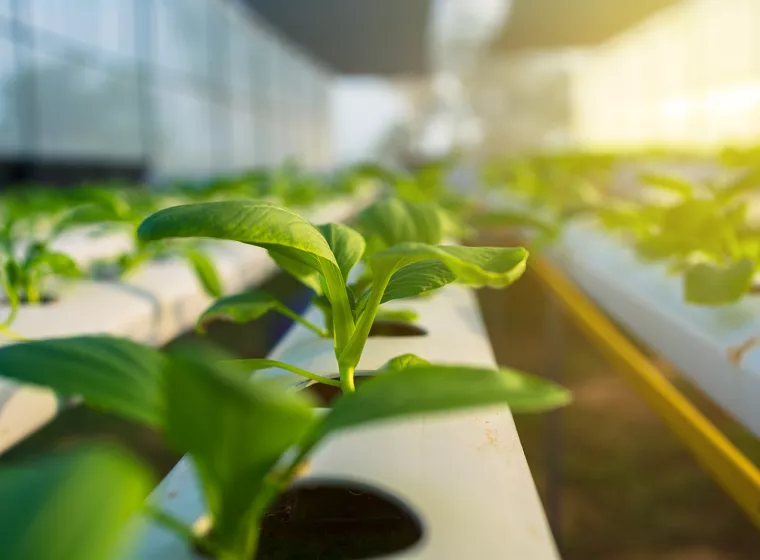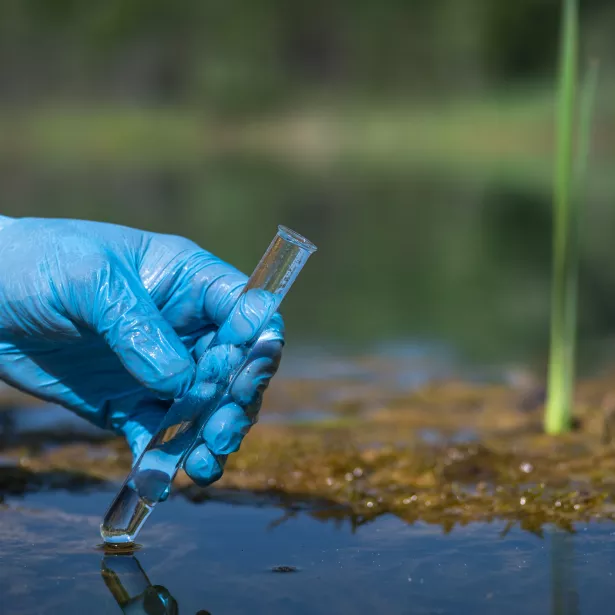April 6, 2023
Agricultural pheromone market growth to outpace optimization of existing regulatory frameworks
If you've had a glass of wine or eaten an orange, chances are you've consumed pheromones, nontoxic chemicals produced by insects to interact with one another. Used by farmers for crop protection, sex pheromones are often sprayed on crops to confuse insects and prevent reproduction while other types of pheromones are used to trap or repel insects.
Agricultural pheromones are generally considered safe for humans and the environment because they are species-specific, leaving non-target organisms — like pollinators and beneficial insects — unharmed. Consequently, with pests eating more than one-fifth of the crops grown around the world each year, pheromones offer a safe and sustainable crop protection product.
So far, widespread adoption of pheromones has been limited by their high cost. Producing just 1 kilogram of artificial pheromones can cost up to $3,500, and, depending on the pest or crop types, their application may cost up to $400 per hectare. Newer, cheaper methods of manufacturing artificial pheromones have the potential to drive down production costs significantly, making pheromones more affordable for growers. Yet despite the demand for these new technologies, getting regulatory approval remains a major challenge for manufacturers and other stakeholders.
Growing global pheromones market
The current global market value of agricultural pheromone-based products is approximately $3 billion with an anticipated compound annual growth rate of 16.4% over the next 7 years.
The market growth of innovative agricultural pheromones for spraying on crops is expected to outpace optimization of existing regulatory frameworks.
In addition to newer, cost-efficient artificial pheromone technologies, there are several reasons for this growth:
- Public demand: Many consumers want pesticide-free produce, and companies need to respond to that demand.
- Regulation and funding initiatives: Governments are imposing stricter conditions for the approval of chemical pesticides and supporting initiatives to speed up the development of effective and sustainable alternatives. The European Commission, for instance, recently proposed new rules to halve the use and risk of chemical pesticides in the EU by 2030. The EU is also funding the PHEromones for Row crop Applications project aimed at developing an effective, affordable, and sustainable pest control method that uses insect sex pheromones.
With the recent acquisition of smaller companies producing agricultural pheromones by larger crop protection products manufacturers, there will likely be more funds available to bring agricultural pheromones to market.
Regulatory frameworks
Unclear data requirements
The market growth of innovative agricultural pheromones for spraying on crops is expected to outpace optimization of existing regulatory frameworks. This could create unclear data requirements that make it difficult for manufacturers to plan and budget adequately for the regulatory approval process.
For example, the latest (2016) version of the EU guidance document (SANTE/12815/2014 rev. 5.2) provides practical solutions for applying existing procedures and data requirements to facilitate the approval of semiochemicals (including pheromones); however, the document is more suited to pheromones applied as dispensers and traps, not sprays, even though pheromones applied as sprays have dominated the global market since 2021. Specifically, straight chain lepidopteran pheromones (SCLPs) deployed in traps often require limited environmental and human exposure data and thus have relatively lower data generation costs. However, for sprayed SCLPs, a more extensive data set may be required.
Developing a sound data generation strategy based on the nature and mode of action of crop protection substances can help mitigate the challenges associated with generating appropriate data and demonstrating product consistency.
Demonstrating consistency of technical specification
In most regulatory jurisdictions, manufacturers also need to demonstrate the consistency of the analytical profile of their agricultural pheromones or crop protection active substances. According to the EU crop protection active substance data requirements, Regulation (EU) No. 283/2013, at least five representative batches from recent and current industrial-scale production must be analyzed for pure active substance, impurities, additives, and other components other than additives, as appropriate.
However, pure pheromones can be difficult to synthesize consistently and accurately. They often have multiple isomers with different biological activities, so producing a single isomer or a specific mix of isomers in a pure form can be challenging, which can delay obtaining the right technical specification for batch analysis. Also, the individual components of the complex mixture of impurities in pheromones can be difficult to resolve. Although Regulation (EU) No. 283/2013 considers the regulatory implications of these technical challenges and allows for less stringency regarding the characterization of impurities from the manufacturing process of pheromones, appropriate justifications are nevertheless required.
Generating a strategy
Developing a sound data generation strategy based on the nature and mode of action of crop protection active substances can help mitigate the challenges associated with generating appropriate data and demonstrating product consistency.
Once a data generation strategy and any relevant justifications for deviation from standard regulatory requirements are in place, the relevant regulatory authorities can be contacted to secure their buy-in. This can potentially smoothen the data generation process and enable the preparation of a timely, high-quality dossier for submission, allowing manufacturers to bring agricultural pheromones to market more quickly.
What Can We Help You Solve?
Exponent's Chemical Regulation & Food Safety experts have extensive experience helping clients resolve technical and regulatory challenges with placing innovative crop protection products on markets in Europe, North America, and other regulatory jurisdictions.

Industrial Chemicals
Regulatory support for chemicals, solvents, polymers, antimicrobials, biocides, and more.

Health Risk Assessments
Identify risks, hazards, and liabilities to improve occupational health and safety.

Agrochemicals & Pesticides
Navigate complex requirements for agrochemicals and pesticides in Europe and North America.

Pesticides and Agricultural Chemicals in North America
Regulatory support, including federal, state, and provincial registration and renewal; product maintenance; and experimental-use applications.

Biocides in Europe
Full product lifecycle strategy support, specializing in active substances.

Plant Protection Products
Meet EU regulatory requirements for plant products while protecting the environment, as well as human and animal life.


